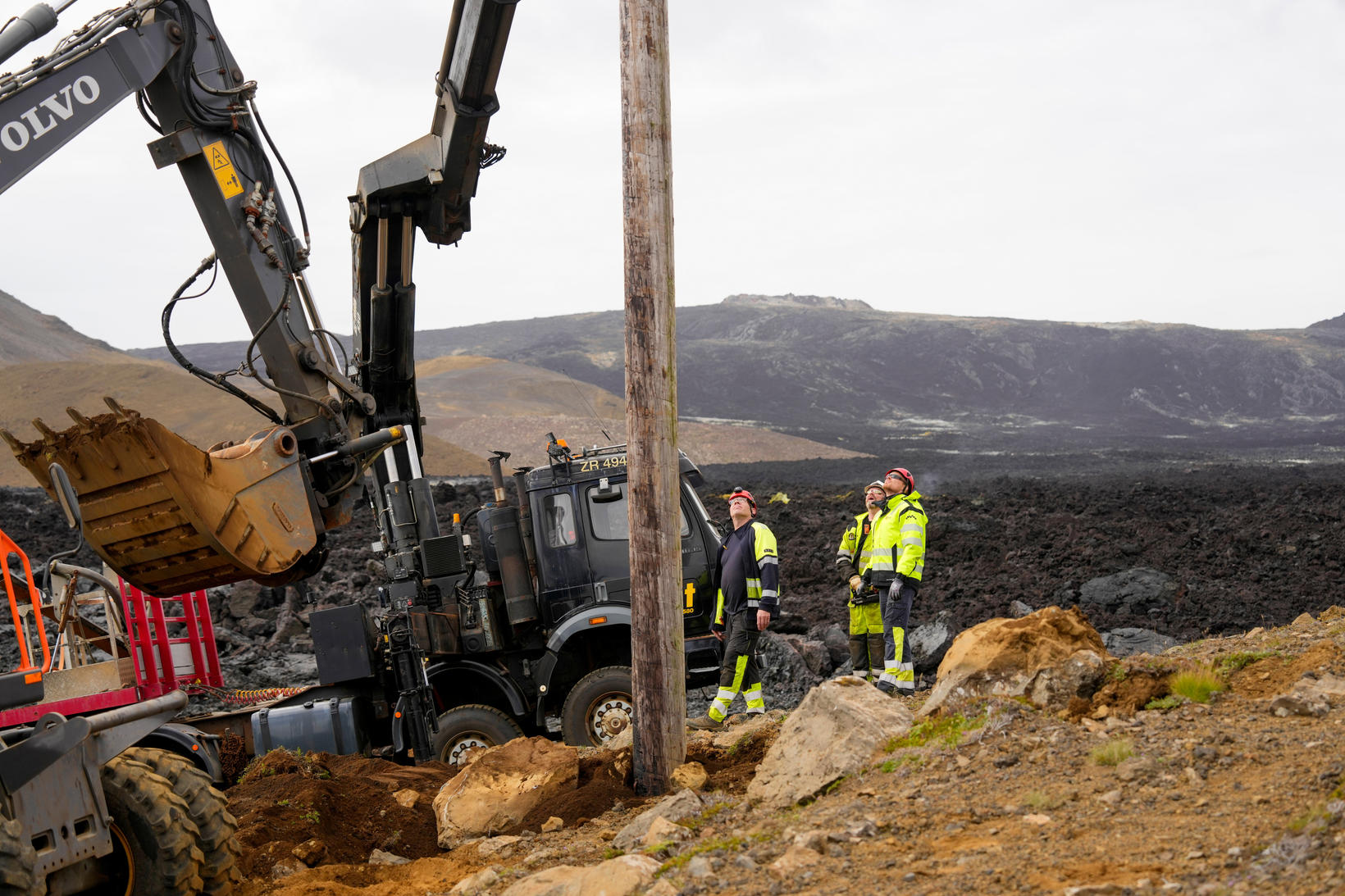Measuring whether the electric grid withstand the volcanic heat
Landsnet , the national grid representatives, among others, are currently conducting an experiment to evaluate the safety of electrical cables, high voltage masts, and high voltage lines in a volcanic eruption site. To evaluate this, Landsnet installs masts and digs cables in an area where lava is expected to flow in the coming days, in order to prepare for such conditions in the future. This is a global enterprise, since an experiment like this one has never been done before.
The project involves among others, Landsnet, Verkís, Efla and the University of Iceland.
“What we started doing is having the lava simulated right now, based on the conditions at the top of the eruption site. Then we see the route it is taking, and thus decided to dig a high-voltage electrical cable into the ground and finish it as it is assumed if it is actually a high-voltage earth station. With special sand, and also a thermometer with the cable, we would have to measure how much it will heat up around such a cable if it is in an area overflowing with lava,” Halldór Halldórsson, the director of the National Grid’s safety committee and chairman of the emergency cooperation of the electricity system, told mbl.is.
Halldór Halldórsson, the director of the National Grid’s safety committee and chairman of the emergency cooperation of the electricity system. mbl.is/Eyþór
The purpose of this study is to find out if a cord survives the heat of the lava flow and how much time Landsnet has in order to find backups or compensate for damage by getting the electricity to the right place in some other way.
Never been done before in a real situation
“In addition, we are also putting high voltage masts into the lava channel to test the dikes or routes that we have actually designed in a simulator, but have not been able to test whether such dikes could protect masts. Even if the mast can withstand it, we are also investigating whether the line can withstand the heat, but the line would be a string above the lava. Therefore, we have thermometers at the same heights as 130 kilovolt lines and 220 kilovolt lines are strung in. We are going to collect data on how much the heat rises and whether the mast is protected, we are going to see if the line can withstand this,” says Halldórsson. These measurements make it possible to incorporate that information into design plans and to determine which wire is needed under these conditions – a wire that could withstand these temperatures.
“It’s an experiment that’s never been done before in the world on site, it’s always been done in some simulations, so it would be quite valuable information, not just for us but for other communities where there is a risk of volcanic eruptions. It’s a scientific project where the results will be published and presented formally, so others will be able to use it,” he says.
Asked if the experiment has been a long time in the making, he says discussions have been going on since the design of the two Southeast lines. When the lava started to erupt, it may as well have moved north or south.
“Then we started thinking straight away about how we could protect Suðurnes line 1 if the lava started to flow down there. Then it didn’t start to flow in that direction, but we still decided with Landsnet in agreement with the Civil Protection to use the opportunity to still try to do real experiments around the eruption as it is now and get our knowledge and information,” Halldórsson says.
Main results expected in mid-August
He says the project is quite big.
“We were joined immediately by Ari Guðmundsson at Verkís and Jón Haukur at Efla, who have been working with us in general, so they have basic information and knowledge, followed by Þorvaldur and Ármann, who are doctors in volcanology at the university,” he said.
It is expected, according to predictions, that lava flows will sweep over the area over the next weekend, with full flow measurements throughout the whole area and close observation and measurements will be made.
“Soon after that, we’ll see if the ground line will survive as soon as it passes, and then we’ll just have a constant reading while the lava is hot and fresh and then naturally it will carbonize and cool. We’ll have a continuous measurement until normal ambient temperatures are in the area,” Halldórssont says.
The main results of the experiment are expected in mid-Augus t.








/frimg/1/57/93/1579337.jpg)

/frimg/1/57/94/1579405.jpg)